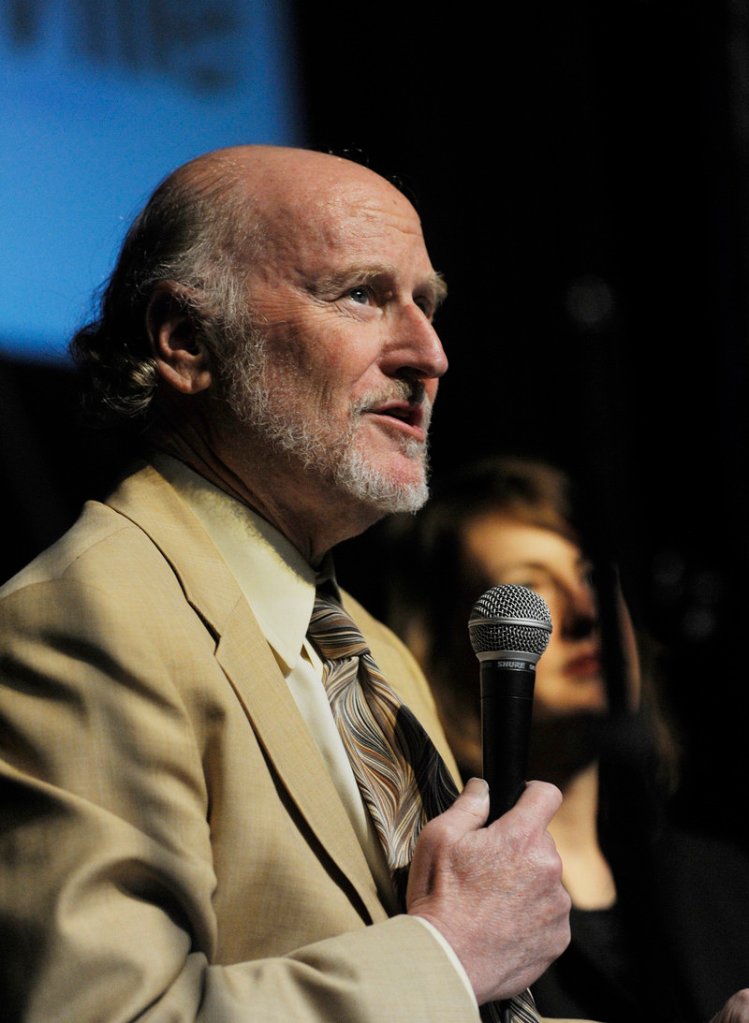Rocco Landesman, chairman of the National Endowment for the Arts, prodded artists to make their audiences squirm, and vowed to support them when they do.
“Art can be controversial. It should be controversial,” the chairman told a capacity audience at Portland Stage Company on Wednesday night.
“Art should not just be validating and tell you what you already know and make you feel comfortable and feel good about yourself. It should shake you up a little bit. It should challenge you. Any art that does that I am all for and I am hoping we will support it and continue to support it. I am not going to be defensive about anything we fund.”
Landesman spent all day in Maine on Wednesday, meeting with artists, educators, private-sector funders, policy makers and government leaders. He toured Rockland and Portland, and this morning will spend a few hours in Portland’s Arts District.
The NEA is the largest arts funder in Maine, contributing about $750,000 toward the budget of the Maine Arts Commission.
Landesman has been chairman of the NEA since 2009 and knows Maine well. He attended Colby College in Waterville in the mid-1960s and vacations in Maine frequently. But Wednesday marked his first official visit to the state.
That is because Maine is known as an arts-friendly place, he said. He spends most of his time while away from Washington visiting cities and states that are not as supportive of the arts as Maine.
He came at the invitation of Maine Rep. Chellie Pingree and part-time Maine resident and painter Barbara Ernest Prey, who serves on the National Council on the Arts, the advisory body of the NEA. She is the only visual artist on the panel.
Prey, Pingree, representatives of the Maine Arts Commission and the state’s arts communities gave Landesman a red-carpet tour. He spent the morning in Rockland, where he toured galleries and addressed a capacity crowd at a community event hosted by the Farnsworth Art Museum. Then he faced a full house at Portland Stage before attending a reception at Maine College of Art.
A former Broadway theater producer, Landesman joked that it made him happy to see every seat filled.
In Portland, he heard presentations from arts leaders representing Biddeford, Waterville and Portland — three cities at various stages of economic development that have identified art and creative enterprise as key to their success.
Landesman praised their efforts, and singled out Portland as “one of the best examples in the country” of a city that has made arts a centerpiece in its economic development efforts.
“Portland is the city it is now because of the arts,” he said.
The NEA refers to creative-based economic centers as creative place-making. For that to happen, cities need three elements: An entrenched arts tradition, committed private funders and supportive public officials.
Places that invest in the arts receive immediate payback in many forms, he said. They have better and more active social communities. Art-centric cities tend to have committed residents who invest in community organizations. Children stay in school and achieve more. In addition, artsy places generally see fewer incidents of juvenile delinquency.
Finally, he said, the arts are a proven economic driver.
“When you have art and artists in the center of a place, the ethos of that place changes. It becomes a different place. People view it differently, and people come there. People want to be around people who are doing art, and it becomes a significant economic driver. It really does work. It does happen.”
Staff Writer Bob Keyes can be contacted at 791-6457 or:
bkeyes@pressherald.com
Twitter: pphbkeyes
Send questions/comments to the editors.




Success. Please wait for the page to reload. If the page does not reload within 5 seconds, please refresh the page.
Enter your email and password to access comments.
Hi, to comment on stories you must . This profile is in addition to your subscription and website login.
Already have a commenting profile? .
Invalid username/password.
Please check your email to confirm and complete your registration.
Only subscribers are eligible to post comments. Please subscribe or login first for digital access. Here’s why.
Use the form below to reset your password. When you've submitted your account email, we will send an email with a reset code.